Sometimes it’s hard to improve upon nature. Agroforestry moves away from modern monocropping farm practices, and back toward a more holistic approach that combines trees, plants, and animals.
What is Agroforestry? At its simplest level, agroforestry is combining agriculture (crops and livestock) with forestry (trees.) It can take several forms including silvo-pastoral and silvo-arable systems.
In this article, you’ll learn what agroforestry is, what its benefits are, its history, and more. Most importantly, you’ll get to know some common examples of how agroforestry is applied in practice.
What Is Agroforestry?
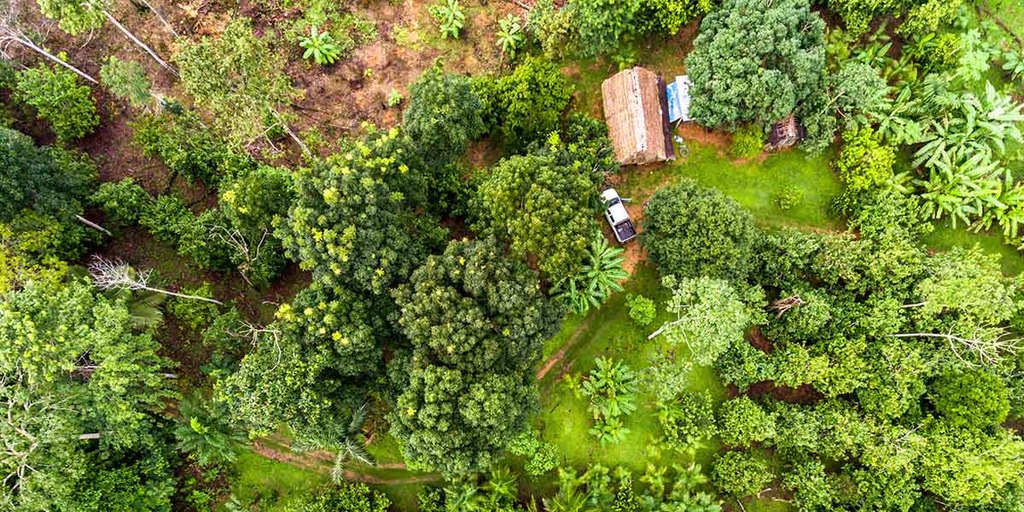
Agroforestry is the mixing of agriculture and forestry. It’s a type of intercropping where trees are grown on pastures or among crops to provide a number of benefits.
The practice has been successfully tried and tested in parts of the United States as well as in sub-Saharan Africa. Today the World Bank estimates that over a billion people worldwide are using agroforestry practices.
Agroforestry is more than just mixing crops and trees though. It’s farming in places like in and along the edges of forests, which previously wouldn’t have been done.
Trees used in this way can be productive as well, and agroforestry often makes use of plants like coffee, cocoa, rubber, and oil palm.
Trees can help provide shade for cooler weather crops like lettuce, provide shelter for livestock, as well as turned into firewood for use as fuel.
Agroforestry allows for sustainable, renewable, long-term forest management while also helping the environment, creating more ecological diversity, as well as increasing and diversifying income for farmers.
- Learn more about Regenerative Agriculture Ultimate Guide and Examples here.
The 4 Traits of Agroforestry Practices
Although how agroforestry is implemented can vary widely, there are four key traits that really define what the essence of agroforestry is meant to be about.
To be distinguished from other forestry or farming practices, a farmer’s use of land must meet all of these criteria to be considered agroforestry:
- Intensive. Agroforestry is an ongoing process to keep productivity up, with annual activities like irrigation, cultivation, and fertilization.
- Intentional. Agroforestry is an ecosystem that has been intentionally designed by humans and gets managed. As opposed to combinations of plants, trees, and animals that just happen to accidentally occur in close proximity to each other.
- Integrated. Crops, trees, and animals are all integrated into a single system. Integration can be vertical or horizontal. This helps improve the productivity of the land and diversifies production between different resources.
- Interactive. Agroforestry takes advantage of physical and biological interactions between crops, animals, and trees. A synergy is created when different aspects of the environment complement each other. For example, trees provide wildlife habitat, and the wildlife in turn keeps pests under control.
- Read also about agroecology, some of the different approaches to agroecology, its benefits, and more.
Examples of Common Agroforestry Practices
The topic of agroforestry is actually made up of many smaller techniques and practices.
The big two are silvo-arable agroforestry, and silvo-pastoral agroforestry. I’ll discuss those first, and then touch on some other agroforestry practices as well.
1. Silvo-arable Agroforestry
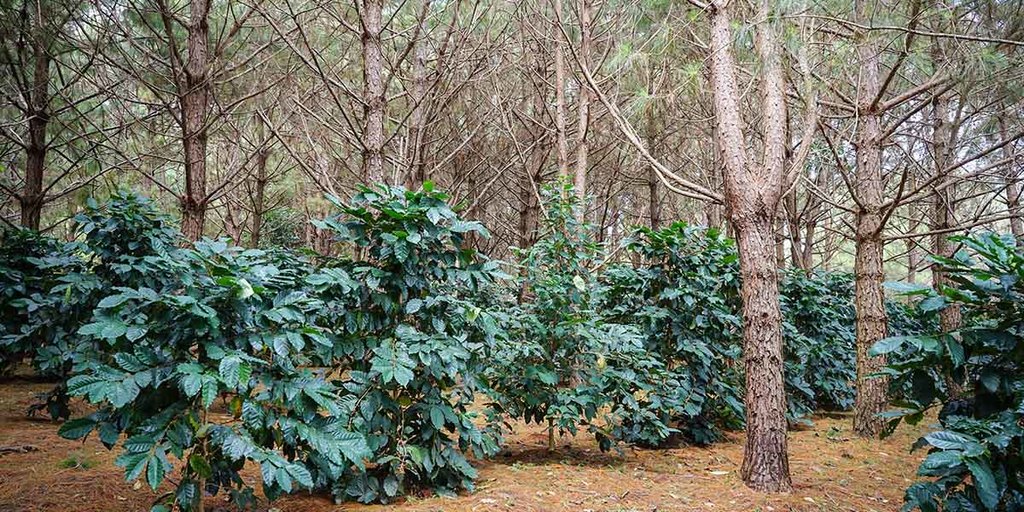
At a most basic level, this is when crops are grown beneath and in between trees. Trees are often placed in rows that are wide enough for a tractor to fit down without damaging them.
Usually about 10 to 15 meters. This wide tree spacing with companion crops grown between is referred to as alley cropping. Silvo-arable agroforestry is possible with most crops.
In addition to crops grown between the rows, the trees themselves can produce a number of valuable resources.
Fruits like apples or pears can be grown and then sold or turned into products like cider. Nut crops like hazelnuts, chestnuts, and walnuts can be collected. Timber trees can be used for firewood and fuel.
Since the trees are grown in such close proximity to the crops, its important that the alleys are deeply cultivated on an annual basis.
No-dig or no-till techniques are likely to result in the area filling with tree roots, even if raised beds are used.
Ideally, tree rows should be aligned North to South to make the best use of sunlight.
To increase wind protection, additional shrubs and taller plants can be planted beside the trees.
Particularly while the trees are young. Coniferous trees are also sometimes placed between rows of trees to help train crop trees to grow straight, and are later thinned out.
Black plastic mulch will help keep weeds under control and give trees their best chance at getting established and growing during the early stages, and still allows for cultivation of intercropped plants up to within a few inches of the plastic.
Pros and Cons of Silvo-arable Agroforestry
Silvo-arable agroforestry has some great benefits compared to conventional agriculture, but it also has some drawbacks you should be aware of as well.
After considering both, you can make an informed decision if it’s the right choice for you.
Pros
- Increased production. In addition to normal crops, you’re also growing wood or tree products with little to no reduction in crop yields, particularly while the trees are still young and growing. Once trees do mature, enhanced microclimate conditions often produce higher crop quality and yields, which offsets any space lost to tree rows.
- Better for wildlife. Silvo-arable agroforestry creates more wildlife habitat for birds, bats, and other beneficial tree-dwelling animals, which in turn will keep pests under control.
- More diverse landscape. Instead of having a single monocropped field, the rows of trees break up the scenery and create a different aesthetic.
- Better soil. Leaves from trees add organic matter to the soil. Specific trees such as honey locust may be selected for their nitrogen-boosting abilities.
Cons
- Perceived inconvenience. Some farmers are hesitant to place trees in their fields, for fear that they will get in the way. Although if rows and alleys are designed with machinery in mind, this isn’t usually a problem.
- Trees may not grow straight. Trees grown for timber in alley cropping conditions tend to grow crooked because of the uneven lighting. This can be corrected and overcome, but requires additional pruning or the use of nurse trees.
2. Silvo-pastoral Agroforestry
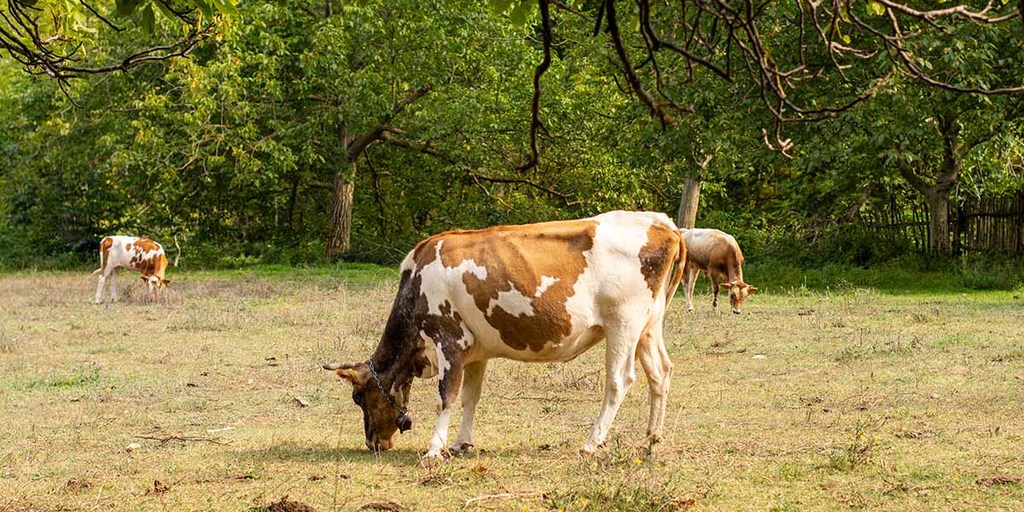
In silvo-pastoral agroforestry, grazing livestock are used instead of the crops featured in silvo-arable agroforestry.
These animals eat the plant matter under the shelter of the trees, while dropping manure that enriches the soil, in turn improving production of tree crops.
Trees are deliberately introduced to open fields or other areas where animals were already foraging in most cases. They may or may not be evenly spaced in rows as done with silvo-arable agroforestry.
The alternatives to row planting are cluster planting or even wide spacing.
Cluster planting has many advantages of row spacing and provides more localized shade.
Even wide spacing means trees are spaced equally far apart. This comes with some additional challenges such as damage from foraging animals and increased problems with weeds.
Pros and Cons of Silvo-pastoral Agroforestry
Just like silvo-arable agroforestry, silvo-pastoral agroforestry also has pros and cons that you should evaluate before getting started.
Pros
- Sustainable. Farmers get the same economic returns from their livestock, but with a more sustainable and environmentally-friendly system.
- More profitable. Added benefit of tree crops often greatly exceeds the income from pastures alone. Likewise, the addition of animals is more lucrative than orchards or forests alone.
- Diversity. Using fencing, the area can be designed to still allow for growing other crops on the same land while still maintaining forage for livestock as well.
- Wind protection. Trees offer wind protection and shade for livestock. Less intervention is required by farmers in cold or hot weather since wind chill and heat stress are reduced. Livestock mortality is reduced as a result.
Cons
- Animals can damage trees. Protecting trees from livestock can be difficult. Using fencing or special materials to keep animals away often costs more than the trees themselves. Techniques like pollarding can be used, but requires more time and effort.
3. Forest Farming
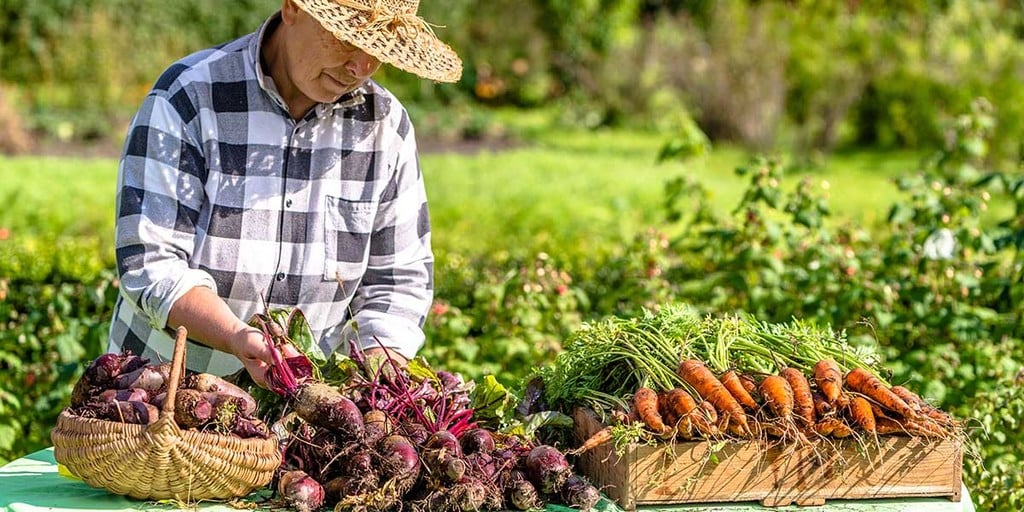
Forest farming is the cultivation of high-value crops under the protection of a forest canopy, which provides a microclimate and many other benefits.
Often silvo-pastoral or silvo-arable agroforestry involves only one or two types of trees or plants.
Forest farming has seven parts: An overstory, an understory, a shrub layer, a herbaceous layer, a vine layer, a ground cover layer, and a root layer.
I have a full article available on creating food forests, forest gardens, and forest farms, if you’d like to learn more about forest farming.
4. Windbreaks
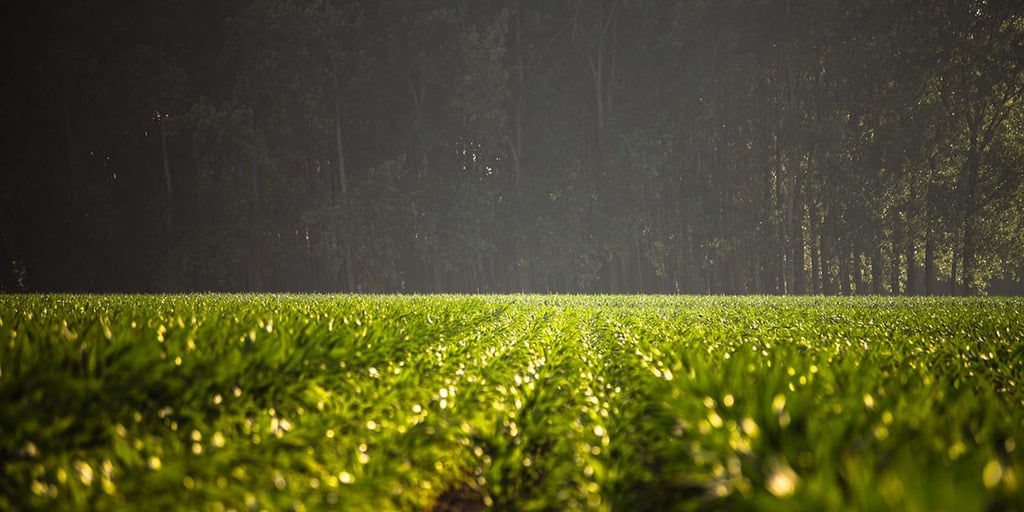
Windbreaks are created by strategically placing shrubs or trees as a barrier against wind. They can be used to protect and shield either livestock or crops from high winds.
5. Upland Buffers and Riparians
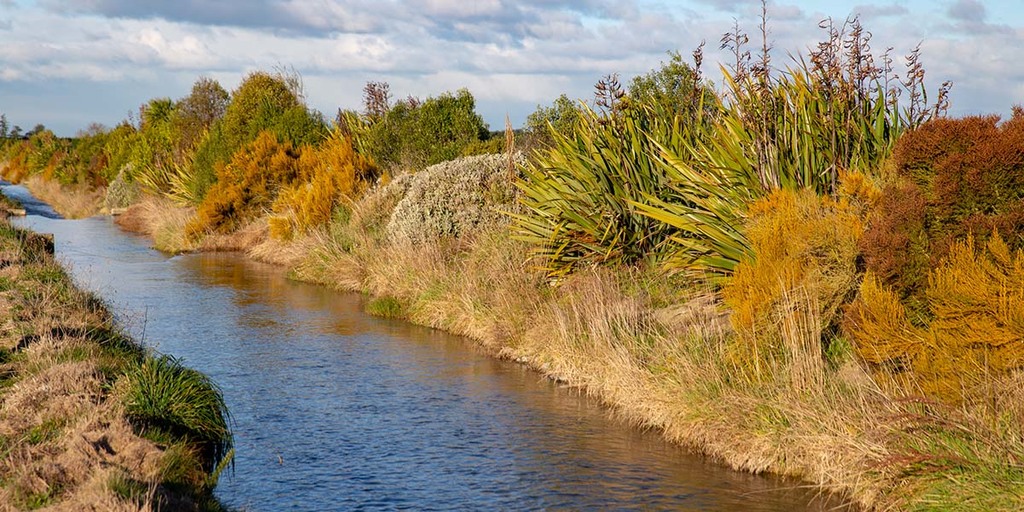
These are permanent strips of vegetation like shrubs, tall grasses, and trees that are used to control and prevent erosion, as well control the flow of water.
They are most commonly used around wetlands. Hedgerows and buffer strips can also be used for a similar purpose in agroforestry
6. Living Fences
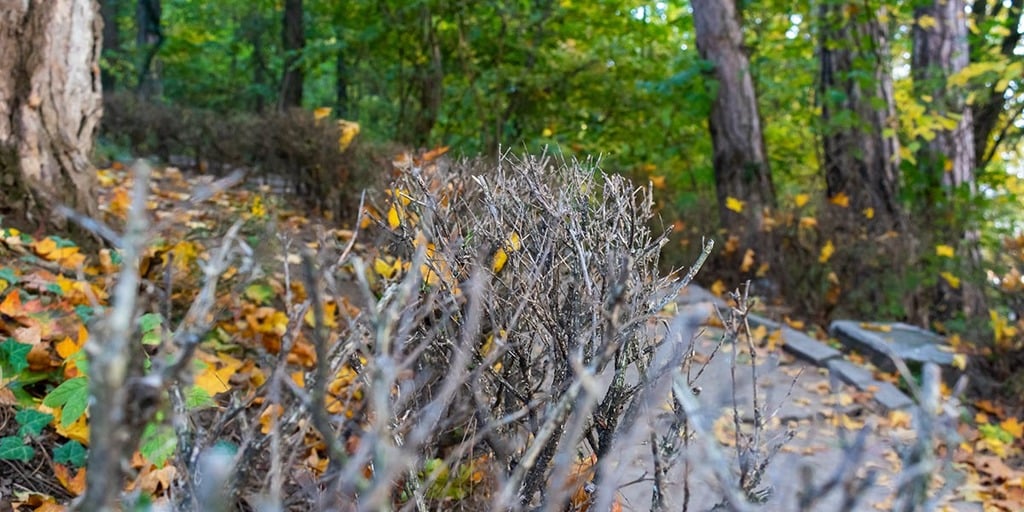
Living fences can be created by training thick hedges to grow between trees. After a few years, the result is a fence constructed of living plants that can restrict the movement of animals and people.
Living fences also give birds and other insect-eating predators a habitat.
Why spend money on lumber when you can have nature create a fence for you? All it takes is a little patience while it grows.
7. Shade Crops
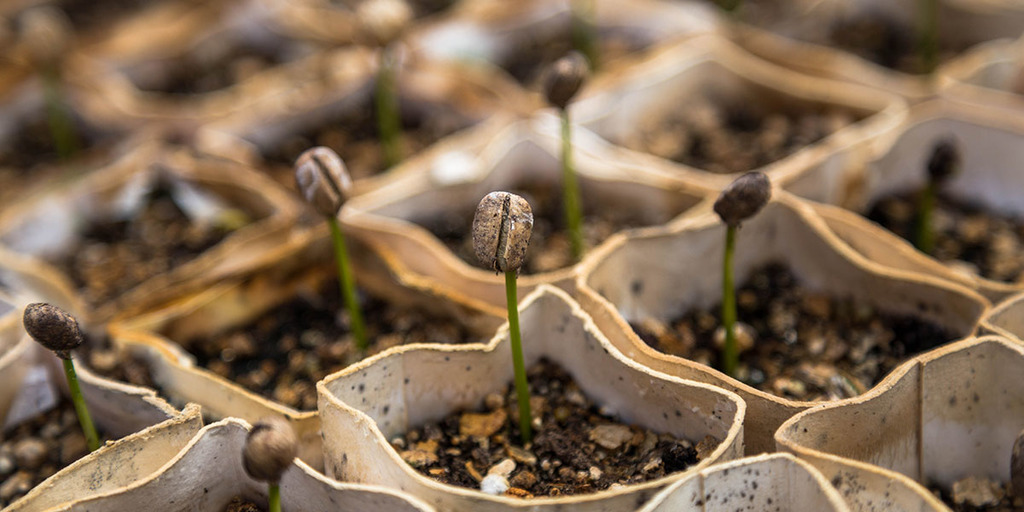
These are crops intentionally raised under shady mature canopies.
This can allow farmers to grow crops that prefer cool weather in the summer, like lettuce, which would otherwise bolt when it gets too hot and too much sunlight.
Shade-grown coffee is another example which improves the taste and quality of the coffee, and also helps minimize the need for weeding.
- Read about The Most Profitable Crops To Grow in your garden guide.
8. Hillside Systems
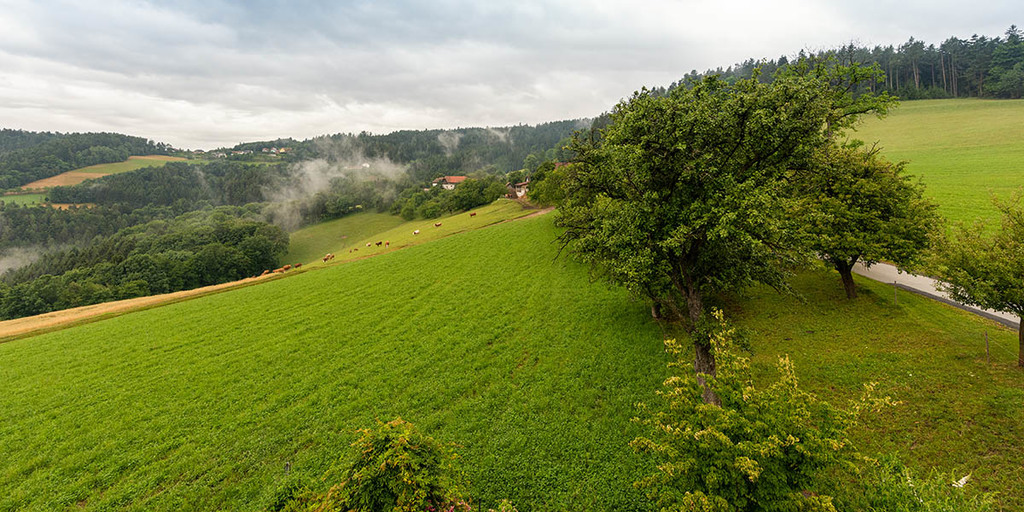
Growing on steep hillsides can be difficult. Particularly in countries that experience heavy seasonal flooding like India or Honduras. Floods can wash away topsoil, leaving behind only barren soil devoid of nutrients.
Nitrogen-fixing trees can help maintain soil moisture and offer shade while reducing erosion. Grazing livestock can also be rotated on to the land every few seasons to add manure and other organic matter back to the soil.
9. Taungya
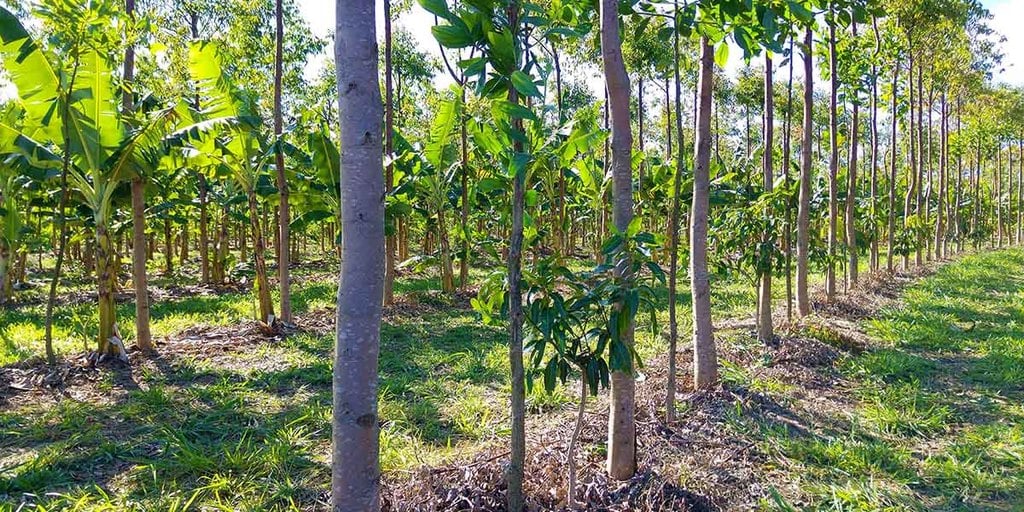
Taungya is an agroforestry system that comes from Burma. Seasonal crops are planted in tree plantations or orchards during the early stages while trees are small and still developing, which leaves lots of unused space.
The crops take the place that would otherwise just be occupied by weeds.
10. Mushroom Production

Many farmers never think of mushrooms as a crop they could potentially grow. But with surprisingly little effort, you can start producing enough edible mushrooms to generate a decent amount of income.
Recently fallen logs and even the ground itself can be inoculated with mushroom spores or spawn, depending on the variety of mushroom you’re planning to grow.
Oyster mushrooms or shiitake are the most popular and probably the easiest. But you can try more difficult and elusive species like morels if you’re feeling lucky.
Mushrooms aren’t just tasty food, but they can help the overall health of your food forest as well.
Fungi rapidly break down organic matter like rotting logs and leaves, and helps to turn them in to rich soil.
The mycelium or root systems of fungi also have beneficial relationships with trees and crops and can make them grow larger and more quickly.
11. Beekeeping
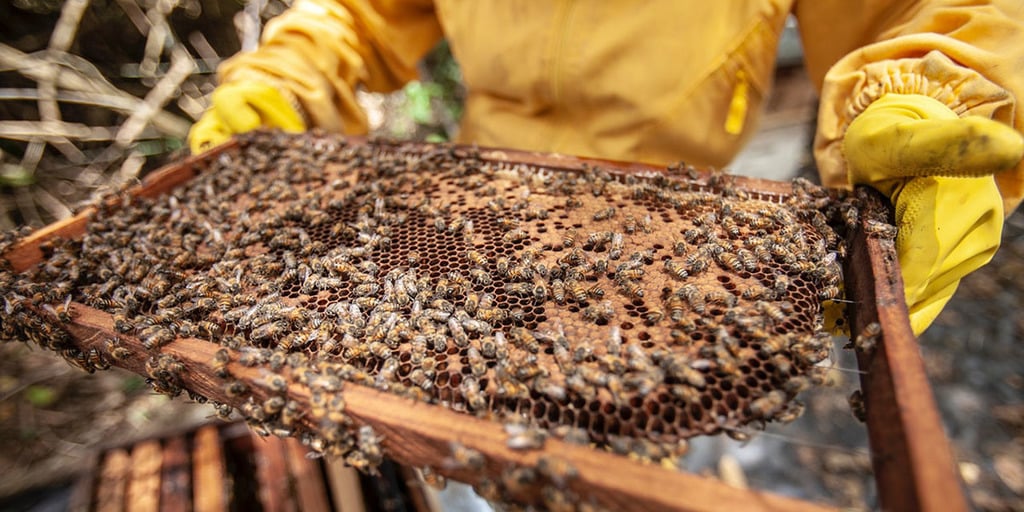
Bees make a fantastic addition to any agroforestry system. You give the bees a place to live, and in return they’ll pollinate your crops for you, which will increase your yields.
Plus you’ll also get delicious honey as an added bonus. Setting up a bee colony and caring for them takes less time and effort than you probably imagine.
- Learn more about insect farming, what kinds of insects are commonly farmed, the benefits and drawbacks, and how to start.
12. Fish Farming

If your agroforest happens to include a pond or other closed water source, then it might be worth considering adding some fish like trout to the ecosystem.
Fish can generally survive all by themselves without any external feeding, only eating bugs and other small lifeforms that already exist in the water.
If you live somewhere that the temperature frequently gets below 0 degrees Celsius in the winter, just be sure that the pond is deep enough that it won’t freeze solid.
Fish can dive deep to the bottom of the pond to hibernate for the winter, but if the water freezes solid then they won’t survive.
Fish produce waste just like other types of livestock, which will gradually make its way out of the water and into the surrounding soil. There it can provide extra nutrients to your crops and trees.
What Are The Benefits of Agroforestry?
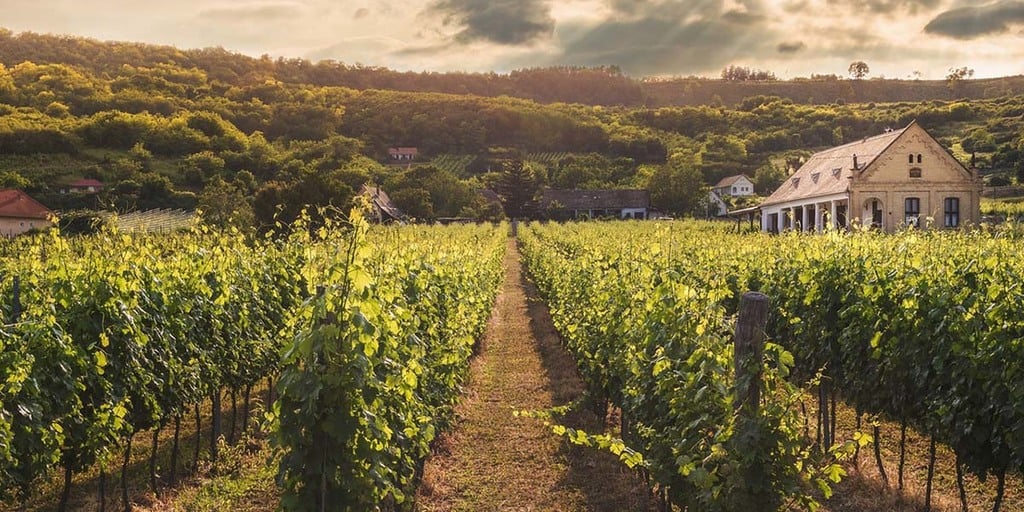
The benefits of agroforestry are numerous, both for the environment and also from an economic perspective.
All of the research from the past two decades confirms agroforestry is more sustainable, productive, and profitable than conventional farming.
1. Increased Profitability
Agroforestry can increase a farmer’s income in a few different ways.
The use of trees can help to protect both crops and livestock from damage caused by wind. So the land is more productive and yields are higher.
The total output from using agroforestry is higher than simply growing a single crop.
When you add up the output from crops, trees, and livestock, it’s generally more productive than just having a farm that grows a single crop like corn or wheat.
Agroforestry diversifies the income sources of the farm. This lowers risk and gives more flexibility to farmers, as their income is split between several new products.
In the long term, agroforestry maintains and often improves the condition of the land. Tree leaves in the fall decompose into rich soil.
The trees create a habitat for wildlife. Pollution is reduced, and soil erosion is controlled.
Overall, agroforestry makes farms more sustainable and profitable in the long-term.
2. Increased Biodiversity

Compared to conventional agriculture, agroforestry offers a lot more biodiversity.
Having multiple different plant species in an area creates an environment that more closely mimics a natural forest, and can support a wider variety of plants and fauna.
Having large trees provides room for birds, bats, and other species to find food and establish nests where they otherwise wouldn’t be able to.
In turn, these beneficial animals can help keep pest numbers down.
With conventional farming, you run the risk of a single disease or pest wiping out your crops entirely.
That’s far less likely to happen when you have a diverse selection of different crops, trees, and livestock.
3. More Drought Resistant
Once a thick tree canopy has formed, the leaves block out some of the sunlight. Rainwater is able to get in, but it evapourates much less quickly because of the cooler shady soil.
4. Useful In Bioremediation
Bioremediation is the use of either naturally occurring or deliberately introduced forms of life to break down pollutants in an environment.
Agroforestry practices have been shown in research to be useful in the bioremediation of problematic soils.
5. Increased Food Security
If you are living a mostly self-sufficient lifestyle, then food security and making sure you have enough to eat is very important to you.
Instead of placing all of your bets on a single crop, you can spread your risk across multiple different types of food like vegetables, nuts, berries, fruit, and other foods.
Plus many items in a food forest mature at different times of the year, so there’s always something ripe and ready to eat.
6. Can Help Reduce Global Warming Through Carbon Sequestration

Trees and other plants absorb carbon dioxide from the atmosphere to grow.
The oxygen gets released, and the carbon is stored inside them. Aside from phytoplankton in the oceans, it’s one of the largest traps of CO2 that we have on Earth.
While one agroforestry farm isn’t going to make a difference, if farms around the world planted millions more trees, it could have a significant impact.
Oak and chestnut trees are particularly good at absorbing carbon, but any tree will help.
7. Reduced Deforestation
Right now, millions of acres of rainforest are being cleared to make pastures for animals to graze.
Instead of cutting down forests to make empty fields and plains for animals to grow on and crops to grow, some trees could be incorporated into the system.
8. Less Need For Herbicides, Insecticides, and Other Toxic Chemicals
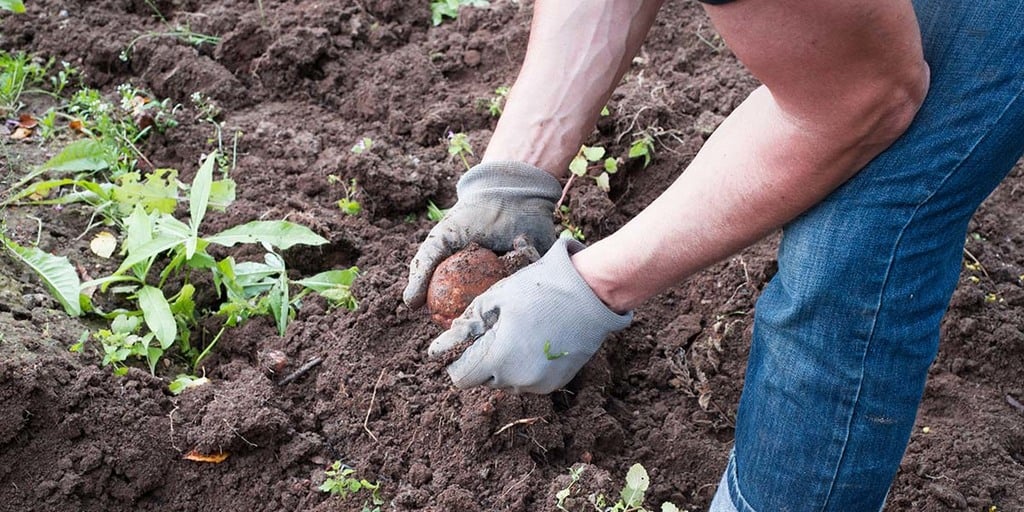
Large tree canopies block out some of the sunlight, which slows and prevents the growth of weeds.
In the autumn, leaves fall and create a mulch on the ground that can help to block out weeds as well.
Trees create a habitat for birds and other creatures that eat insects, reducing the amount of pests that crops need to deal with.
9. Reduced Dust, Odor, and Noise When Compared To Conventional Farms
Picture a conventional pig or cow farm. Animals standing in an open field (if they’re lucky) and manure everywhere.
Anybody who has lived near a pig farm can tell you that it’s not a pleasant smell.
Agroforestry helps cut down on smell and dust, and trees will even help to reduce noise by blocking sound.
10. More Visually Appealing, More Green Space

Whether for yourself, your neighbor, or your community, agroforestry is just more appealing. What would you rather look at every day when you look out your window?
An empty field that never changes and is barren of life? Or a forest that is constantly changing with the seasons which breaks up the scenery, and is home to all kinds of wildlife?
11. Brings Up Nutrients and Water From Deep Underground
Trees can access nutrients and other resources from deep underground that regular cover crops and shrubs simply can’t reach.
The further a tree’s roots extend underground, the more drought-resistant of a species it is.
12. Builds Organic Soil Matter and Improves Soil Quality

Over time, leaves, sticks, and even whole trees will eventually fall and decay, adding to the quality of the soil in your food forest. It’s nature’s way of composting!
In conventional farming, fertilizer and nutrients usually need to be added to the soil every year.
But using agroforestry makes your farm into basically a closed system where nutrients stay locked in.
13. Controls Runoff and Soil Erosion
Soil erosion and runoff is a huge problem for conventional farmers. You can minimize them by using agroforestry.
Tree roots and other plants will help catch water and soil, preventing it from getting washed away.
You can add contours and other features to your land to further prevent erosion and runoff, but even just having extra trees will be an improvement.
The History of Agroforestry
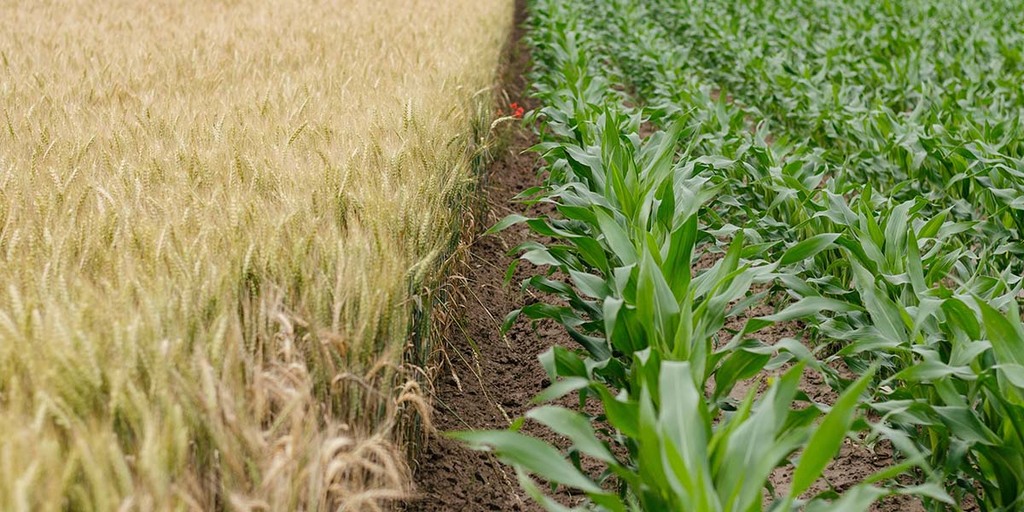
While agroforestry as a concept only really emerged in the 20th century, similar practices go back much further.
The Native Americans of California would periodically do controlled burns of oak and other trees.
This increases soil quality, improves tree health, and improves the ecosystem in general. It also reduces the kinds of brushfires that are all too common in the area today.
In Roman times, we have written records of people using woody perennials alongside their farming. So it’s safe to say that the idea of intercropping trees, animals, and crops together has a long history all over the world.
In Europe before the middle ages, it was common for farmers to re-plant integrated trees and crops in forest areas that were harvested.
Agroforestry as we know it today was first outlined by geographer J. Russel Smith in 1929, in his book titled Tree Crops: A Permanent Agriculture. (Learn more about the best permaculture books here.)
Since then, a number of other works have been published on the topic. And in 1977, the International Council for Research in Agroforestry (ICRAF) was created, which was renamed the World Agroforestry Centre in 2002.
The Challenges of Agroforestry
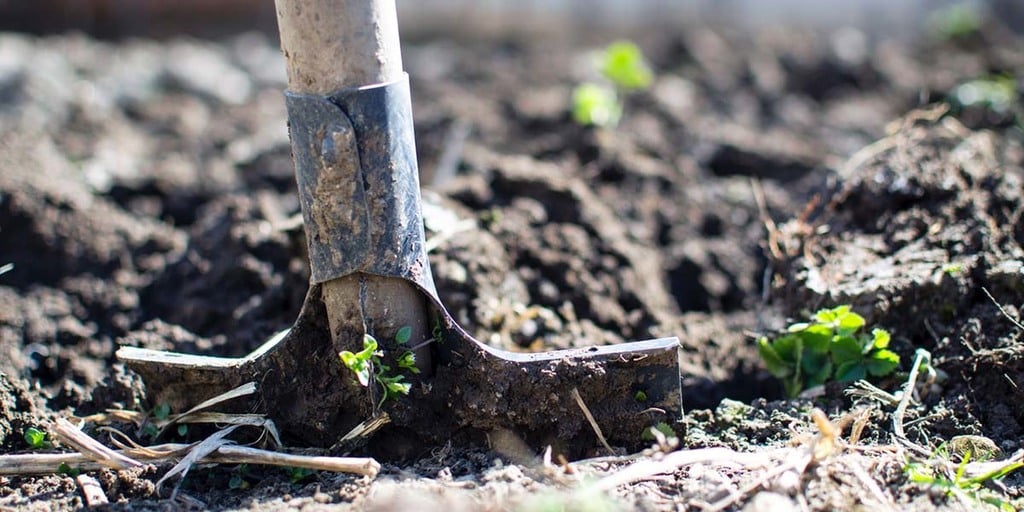
You might be wondering to yourself: so if agroforestry has so many great benefits and few downsides, why isn’t it more common?
In many cases, it’s simply a lack of awareness that the option is even available.
Hopefully, with time, this will gradually shift and more and more farmers will start to realize that it’s an option.
But even for farmers who have heard about agroforestry and can see the benefits, actually implementing it can seem like an overwhelming task.
If nothing else, there’s a big perceived risk from switching to a system you’ve perfected and know that works, to trying out something completely new and different which might not pay off for several years.
Farmers might make decisions based on first impressions without really looking at the research.
On the surface, it might not look profitable, and might seem like a lot more work and inconvenience.
All of the new techniques, terminologies, and new technology can be a lot to take in, especially for an older farmer who might be less open to change.
Some farms may lack the finances necessary to transform their farm into a food forest. And banks may be unwilling to lend financial assistance to something that has the perception of being a newer and unproven strategy.
Besides the money, farmers may be unwilling to invest the time needed to upgrade to an agroforestry system as well.
Many farmers have devoted their entire life to a single crop, like soybeans, corn, or wheat. So the idea of learning about new markets and alternative marketing approaches is another barrier to overcome.
Especially since agroforestry is such a holistic system and you can end up with many different products.
Perhaps the hardest barrier to overcome of all is a short-term mindset.
Many farmers simply aren’t willing to risk short-term profit to give agroforestry a try, because it’s a long-term investment that could take many years to pan out.
Hopefully, as more and more farmers are willing to give agroforestry a try, the improvements to biodiversity, soil health, and other benefits will start to become apparent and create a snowball effect that inspires others to follow along as well.
Frequently Asked Questions
A: Agroforestry is a sustainable land use system that combines crops, trees, and/or livestock.
Social forestry is more about the protection and management of deforested lands in an effort to provide social and rural development while helping the environment.
Q: What are the limitations of agroforestry?
A: If not properly planned, trees can potentially compete with food crops for sunlight, water, space, and nutrients, which can reduce crop yield.
Trees can also potentially serve as hosts for insects that could harm crops. It can also require more initial labor inputs and takes longer to show results than conventional farming.
Q: What is monocropping agriculture?
A: Monocropping is where a single crop is grown on the same land year after year. Not rotating crops can lead to nutrients becoming depleted in the soil, as well as soil erosion and other problems.
Wheat, soybeans, and corn are three plants commonly grown as monocrops.
Q: What is relay cropping?
A: Relay cropping is growing two or more crops on the same field. The second crop is planted after the first crop has completely developed.
Q: What are the products of agroforestry?
A: Agroforestry systems can offer a wide variety of different products, depending on where in the world you live and what your climate is like. Some common products include:
- Timber
- Craft products
- Fuel or firewood
- Recreation
- Ecological services
- Food
- Forage and fodder
- Gardening materials
- Thatching and hedging materials
- Gum and resins
Conclusion
Agroforestry is a more holistic farming technique that combines animals and/or crops with trees in an effort to more closely mimic nature.
To qualify as agroforestry, a system should meet four criteria: intensive, intentional, integrated, and interactive.
For me, it seems clear that the benefits of agroforestry greatly outweigh the few negative drawbacks.
However, it may be difficult for farmers to switch to an agroforestry model for a variety of reasons including lack of access to information, the time and money required, or a sense that it’s a relatively new and unproven system.
Still, over time, I expect we will see more of a trend away from conventional and monoculture farming and back to agroforestry and permaculture.
